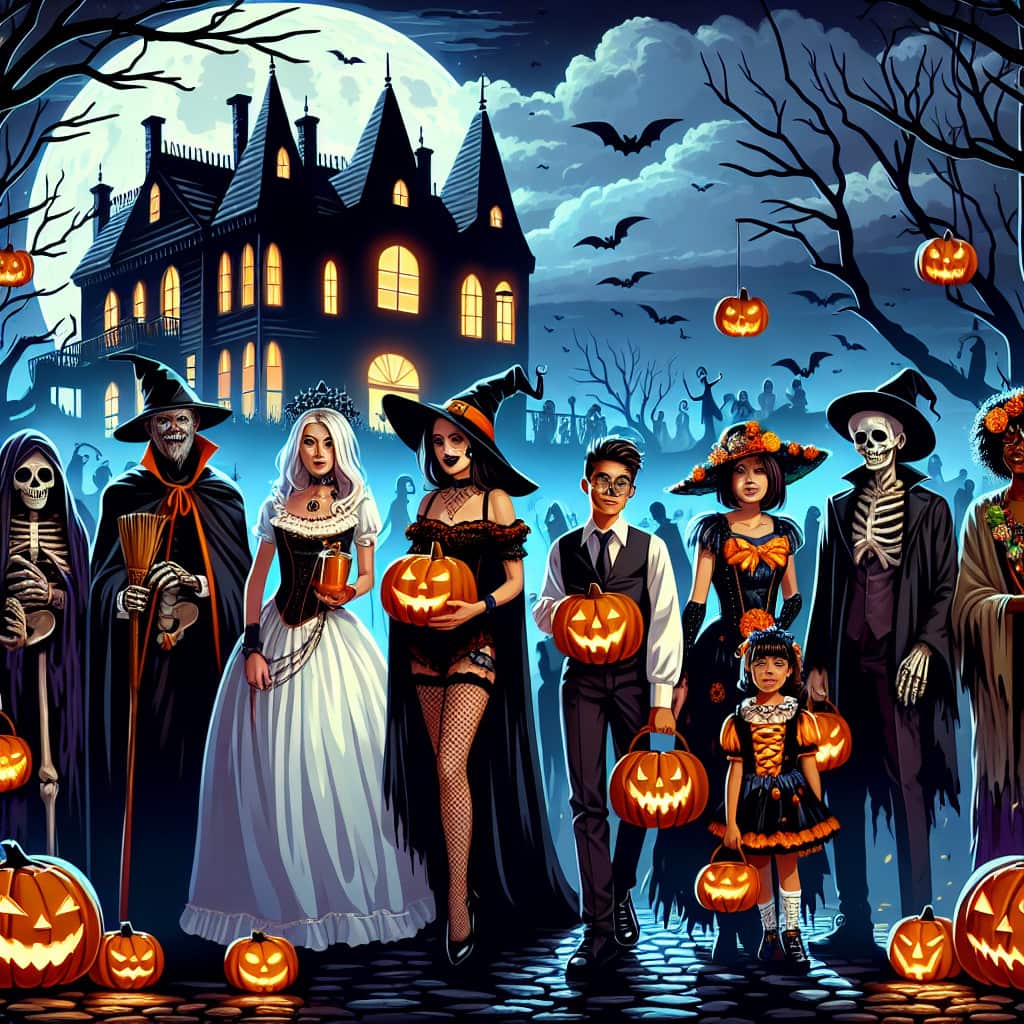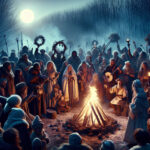Halloween is one of the most celebrated holidays of the year, with people from all different backgrounds taking part in the festivities. But what many may not know is that it began as a pagan holiday. This article will explore the origins of Halloween and how it has evolved over the centuries to become the popular holiday we know today.
Halloween is a holiday with ancient roots. It is believed to have originated from the Celtic festival of Samhain, when people would light bonfires and wear costumes to ward off ghosts. Today, Halloween is celebrated with costumes, candy, and decorations, and is popular in many countries around the world.
What is the origin of Halloween?
Halloween is thought to have originated from the ancient Celtic festival of Samhain. The Celts, who lived 2,000 years ago in the area that is now Ireland, the United Kingdom, and northern France, celebrated their new year on November 1. This day marked the end of summer and the harvest and the beginning of the dark, cold winter, a time of year that was often associated with human death. Celts believed that on the night before the new year, the boundary between the worlds of the living and the dead became blurred. On the night of October 31 they celebrated Samhain, when it was believed that the ghosts of the dead returned to earth. In addition to causing trouble and damaging crops, Celts thought that the presence of the otherworldly spirits made it easier for the Druids, or Celtic priests, to make predictions about the future.
To commemorate the event, Druids built huge sacred bonfires, where the people gathered to burn crops and animals as sacrifices to the Celtic gods. During the celebration, the Celts wore costumes, typically consisting of animal heads and skins, and attempted to tell each other’s fortunes. When the celebration was over, they re-lit their hearth fires, which they had extinguished earlier that evening, from the sacred bonfire to help protect them during the coming winter.
How is Halloween celebrated today?
Today, Halloween is celebrated in many countries around the world, though it is most popular in the United States, Canada, Ireland, and the United Kingdom. The traditional activities include carving pumpkins, attending costume parties, trick-or-treating, visiting haunted attractions, watching horror films, and telling scary stories. In many parts of the world, the Christian religious observances of All Hallows’ Eve, including attending church services and lighting candles on the graves of the dead, remain popular, although elsewhere it is a more commercial and secular celebration.
In most parts of the world, Halloween is a time for children to dress up in costumes and go trick-or-treating. Many children go to parties, watch horror films, and play pranks on their friends. Adults may attend costume parties or hold events in which the guests dress up as witches, zombies, or monsters. Some adults may take part in activities such as apple bobbing or divination games, in which they attempt to learn about their future. A common game is dunking or apple bobbing, in which apples float in a tub or a large basin of water and the participants must use their teeth to remove an apple from the basin. The tradition of dressing up in costumes and going house to house asking for treats on Halloween dates back to the Middle Ages and the practice of souling.
What are some common symbols of Halloween?
The symbols of Halloween include jack-o’-lanterns, ghosts, witches, bats, black cats, spiders, and other spooky imagery. The jack-o’-lantern, a carved pumpkin lit by a candle inside, is one of the most recognizable symbols of the holiday. Other common decorations include skeletons, skulls, and images of witches on broomsticks. Many people also decorate their homes with fake cobwebs, pumpkins, and other spooky images.
What foods are traditionally eaten on Halloween?
Traditionally, the foods associated with Halloween are sweets, such as candy apples, caramel apples, candy corn, and chocolate bars. Other traditional foods include popcorn balls, toffee apples, and pumpkin-pie. In some countries, such as the United States, it is also common to serve savory snacks such as chips and dip, pretzels, and popcorn.

Halloween is a holiday steeped in history and tradition. It has evolved over centuries, with its roots in ancient pagan festivals and customs. Despite its pagan origins, Halloween has become a popular holiday celebrated in many parts of the world today. It is a time for fun and creativity, for dressing up and for gathering with friends and family. It is a time to remember the past, to honor the dead, and to celebrate the changing of the seasons. The most important thing to remember is that Halloween is a time for fun and enjoyment, and should be celebrated with respect and appreciation for its unique history and traditions. **No matter where you come from or what your beliefs are, Halloween is a holiday that can be enjoyed by all.**





